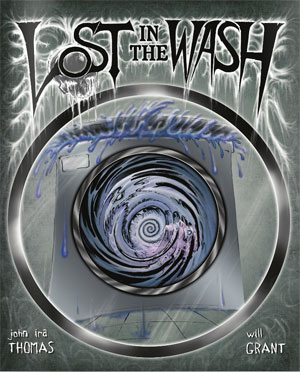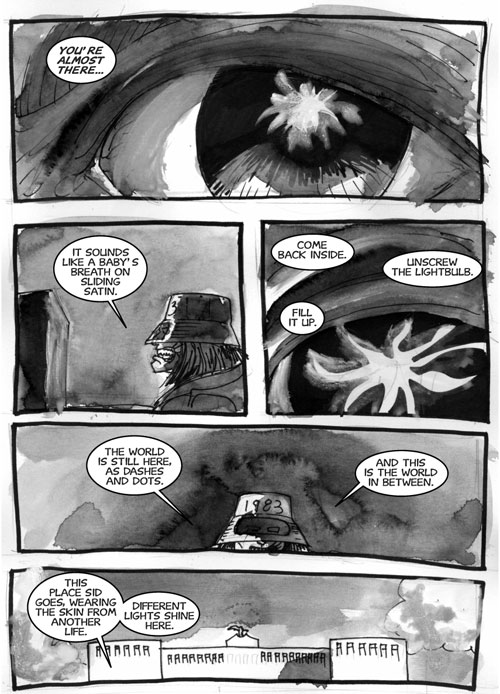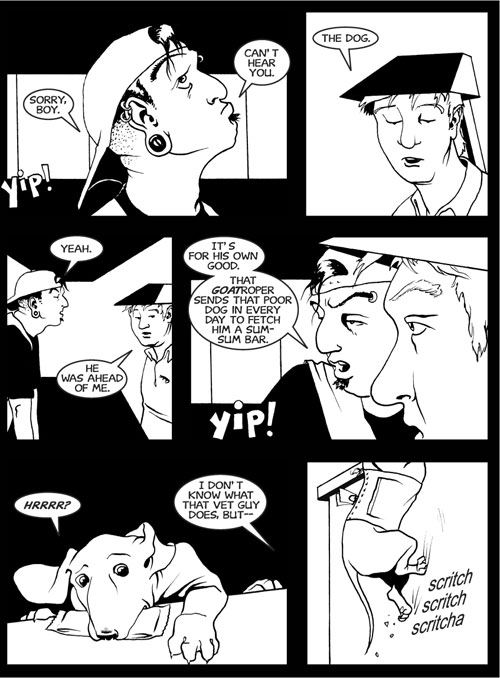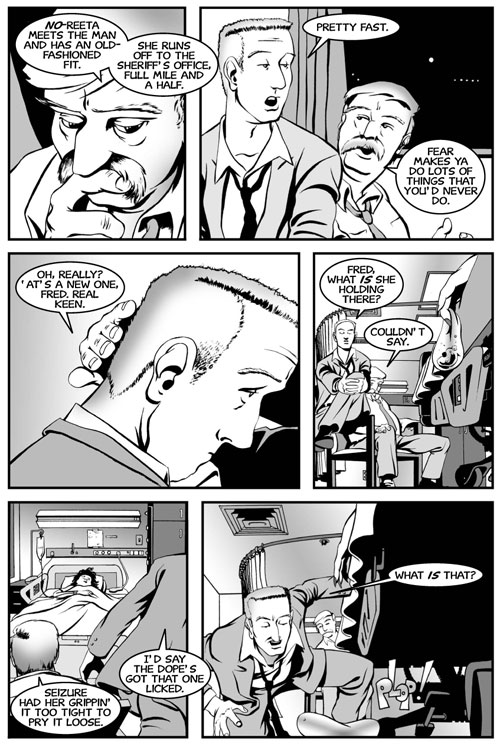Dirty Laundry
Lost in the Wash
Picked this one up recently — written by former Lubbockite John Ira Thomas, with art by Will Grant, from Thomas’ Candle Light Press.
The story is set in a tiny town in the Colorado mountains called Isco — it used to be called Francisco ’til the locals changed the name in a burst of misguided patriotism prior to the Iraq War. Still, for a town with a population of just 60 people, it’s got an unusual collection of amenities — an occult bookstore (which doubles as a tattoo parlor and a paintball range), a fairly large laundromat, and a castle. And a ghost. Maybe several ghosts…
Walt and Terisa run the bookstore/tattoo/paintball parlor (and try to drum up support for something they call Gothic Colorado, which gives the local punk/goth population an excuse to try to scare themselves with ghost stories and rituals), while Darrin runs (and lives in) the laundromat for his tyrannical uncle Sal, who lives in the local castle. Darrin has a seriously rotten life — he refers to himself as a ghost, because no one notices him, no one cares about him, he’s invisible to the world because he lives and works in a laundromat, plus his uncle pretty much owns him and heaps abuse on him at every opportunity.
And there’s a monster living inside the washing machines.
A giant snake, in fact, made out of water. It periodically emerges, sucks some poor soul dry, and vanishes ’til the next time it gets hungry. And this leads to even more questions — why is Darrin so good at throwing scares into the goth kids at Gothic Colorado? What is Sal really doing in that big castle? And is Darrin even alive at all?
Verdict: Thumbs up. It’s a good, fun, spooky story, and I bet you’d like it.
Let’s talk setting a bit. Part of me wants to snark about how this tiny, tiny town in the mountains has so much odd stuff. A laundromat, a bookstore, and a castle? But on the other hand, part of it feels very realistic. When I was a kid, we’d often spend our summer vacation in the southern New Mexico mountains, and you quickly learn that folks up there are a bit quirky. No, not crazy or dangerous, but they’ve moved way out to the edge of civilization, and if they want to open a deluxe ice cream parlor or learn chainsaw sculpture or start an ostrich farm or cover their entire house with animal skulls — well, they’ll do it, and no one much is gonna complain. The large numbers of punked-out goth kids is a bit much, but the rest? I reckon I’ve seen weirder.
Thomas’ story itself is seriously offbeat — a mystical water serpent lurking in coin-op washing machines? — while still being tense, surreal, and frightening. There are threats here both mundane and supernatural, and we’re never really sure what’s the most dangerous, or where the next shock will hit us.
Grant’s art is fun, too — part surreal and jagged and enraged, part liquid and wet and flowing — appropriate for a story where water plays such a big role in the action. Seriously, plan to spend a little extra time to read through this carefully — the path of Grant’s art from one panel to the next and from one word balloon to another is not always in a straight line. You can’t control where the river may take you, after all.
It’s a good one, kids. Go pick it up.




